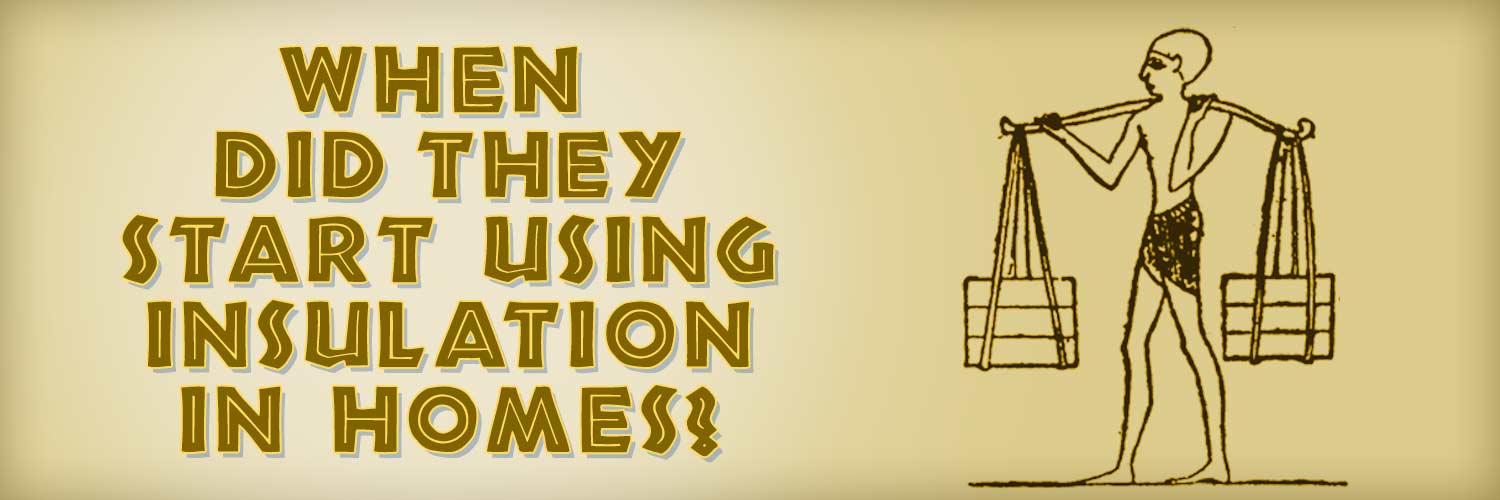When Did They Start Using Insulation in Homes?
new home insulation | existing home insulation | home insulation history


Much like the sky is blue and water is wet, many people just think of insulation as a thing that just is.
That’s not exactly true though.
Insulation in homes, relatively speaking, is a newer concept when it comes to keeping your home comfortable. When I say relatively, I mean it’s likely if your home was built before the 1950s, you’re not going to find what you think of as traditional insulation in your walls.
RetroFoam of Michigan has insulated thousands of homes across the lower peninsula since we started in 2002. We’ve insulated houses in the Detroit-area that were built in the mid to late 1800s and found nothing but horse hair in the walls.
In other cases, you might find newspaper, hay, or pretty much anything that would fill the wall cavity.
But let’s not jump ahead of ourselves, I have some history I am going to lay out for you.
In our ongoing efforts to educate homeowners, we are going to discuss the early beginnings of home insulation right up to the innovations we see today. I mostly promise to make sure this isn’t boring.
History of Insulation in Homes

Now it’s time for a history lesson where we’re gonna talk about home insulation.
We are about to go way back and by that, I mean to the beginning of a time when people wanted their abodes to be cozy.
Buckle up, because we’re taking this DeLorean back to ancient Egypt, traveling through time, and then back to the future covering the history of home insulation.
- Ancient Egypt. The three pyramids in Giza are a testament to the building expertise of the ancient Egyptians. When it came to keeping the desert heat out, the Egyptians created thick stones made of mud. This insulator kept their homes cool during the day and warm at night when the temperatures would drop.
- Ancient Greece. While we avoid using anything with asbestos today and know it can be toxic, the ancient Greeks used it in their buildings. They were familiar with its ability to resist heat. The Greeks also knew using air gaps in their walls could provide better insulation.
- The Roman Empire. The Romans were known for their innovations – building roads, creating aqueducts, and heated baths. How were they going to transport that water? Through pipes that they wrapped in cork that insulated it.
- Viking Insulation. The Vikings come from a region that isn’t known for being all that warm. How do you think they kept that cold, blowing wind out of their wooden structures? By putting mud in the cracks and crevices to keep the air out.
- The Middle Ages. Large tapestries were great pieces of art in castles and some homes throughout the middle ages, but they were much more than something to look at. Those tapestries also helped keep out cold drafts.
- The Industrial Revolution. Steam power ALL THE THINGS! This meant there were a lot of hot pipes that needed to be insulated. As a way to keep workers safe and keep the heat in, asbestos was brought in to wrap the pipes. For more than a century, asbestos was used as one of the main insulation materials until health concerns were raised in the mid-1970s.
- The 1930s and 40s. While cellulose insulation is one of the earliest insulation materials still used today, it didn’t become a popular choice until the 1950s. In the 1930s fiberglass insulation was invented by the Owens Corning Company to insulate homes.
- The 1950s through 1970s. Once a fire retardant was added, cellulose became a popular insulation material option. Foam insulation hit the scene in the 1970s and became another option for homeowners looking to make their homes more comfortable.
- Wall Insulation Requirements. In 1965, building codes in the U.S. made it a requirement that homes being built had to have insulation in the walls. The requirements have changed several times since then, but now it is required the entire house be insulated and the big trend is moving towards creating an air seal.
- Today. Today the top three insulations used in homes are fiberglass, cellulose, and foam. Homeowners are looking to make their homes more comfortable and energy efficient. Each material has its own set of pros and cons, so it comes down to what will work best for each individual person and their expectations.
Insulation in Your Home
Now that you have a better understanding of when home insulation first hit the scene, you might be wondering if your home is well insulated.
Your home could be one of the 90 percent across the U.S. that is under-insulated. There are typical signs you need insulation, like cold walls and drafts, but you can also take a look yourself by looking in the attic or crawl space. You can even remove the plate on your light switch to get a better look at those walls.
There are more than a dozen signs you are lacking in the insulation department. Check out our “18 Signs and Symptoms it May Be Time to Update Your Insulation” to see how many of your home’s issues are connected to little or no insulation.
About Amanda Emery
Amanda previously has worked as a breaking news and crime reporter, TV news producer, and editor in Flint and Detroit. Throughout her career as a journalist, she has won several awards from The Society of Professional Journalists - Detroit Chapter and the Michigan Press Association. As part of the RetroFoam of Michigan family, Amanda uses her experience as a journalist to write content that will help educate homeowners on the benefits of foam insulation. When Amanda isn’t writing, she’s spending time with her husband and rescued huskies. She also loves knitting, making art, cooking, and hosting dinner and a movie night for friends and family.


